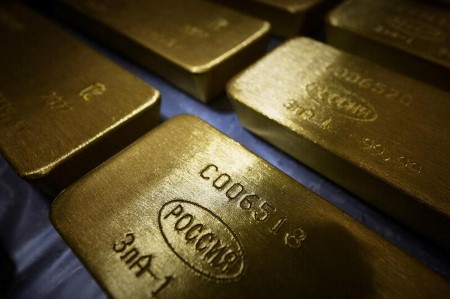




Policy Rate Updates: Double cut finale
 DOWNLOAD
DOWNLOAD

Monthly Economic Update: One for the road
 DOWNLOAD
DOWNLOAD

Inflation Update: Still low, still slow
 DOWNLOAD
DOWNLOAD


Gold jumps after US Fed signals rate-hike pause imminent

March 22 (Reuters) – Gold prices climbed on Wednesday after the US Federal Reserve toned down its aggressive approach to reining in inflation in a widely anticipated policy statement and indicated that an end to interest rate hikes was on the horizon.
Spot gold was up 1.7% at USD 1,973.52 per ounce by 3:56 p.m. EDT (1956 GMT), after advancing as much as 2%. US gold futures settled 0.4% higher at USD 1,949.60 before the Fed announcement.
The Fed raised interest rates by a quarter of a percentage point, but indicated it was on the verge of pausing further increases in borrowing costs amid recent turmoil in financial markets.
But in the press conference that followed, Fed Chair Jerome Powell said the central bank was not expecting to cut rates in 2023.
“The Fed is having to balance inflation risks and economic stability, both are factors that could drive further safe-haven demand for gold,” Standard Chartered analyst Suki Cooper said.
Gold has climbed over 7% so far this month, closing in on record highs above USD 2,000 hit in March 2020, on concerns surrounding the banking and financial industry, mainly triggered by higher rates.
“While off its intraday highs, gold is ‘sticking a fork’ in the Fed’s turkey and rallying strongly, betting that this rate-hike cycle is done,” said Tai Wong, an independent metals trader based in New York.
“The hurdle for another hike is substantial with the Fed explicitly watching the tightening of financial conditions and the question though is whether gold can break above last week’s highs with short-term rates at 5%.”
Gold is often sought as a safe store of value during financial instability, and benefits from lower rates as it yields no interest.
US Treasury yields dropped, and the dollar touched its lowest in nearly seven weeks, making precious metals more attractive.
Silver gained 2.6% at USD 22.97 per ounce, platinum added 1.5% at USD 982.86 and palladium advanced 3.6% to USD 1,438.45.
(Reporting by Seher Dareen and Bharat Govind Gautam in Bengaluru; Editing by Shilpi Majumdar)
This article originally appeared on reuters.com





 By Reuters
By Reuters